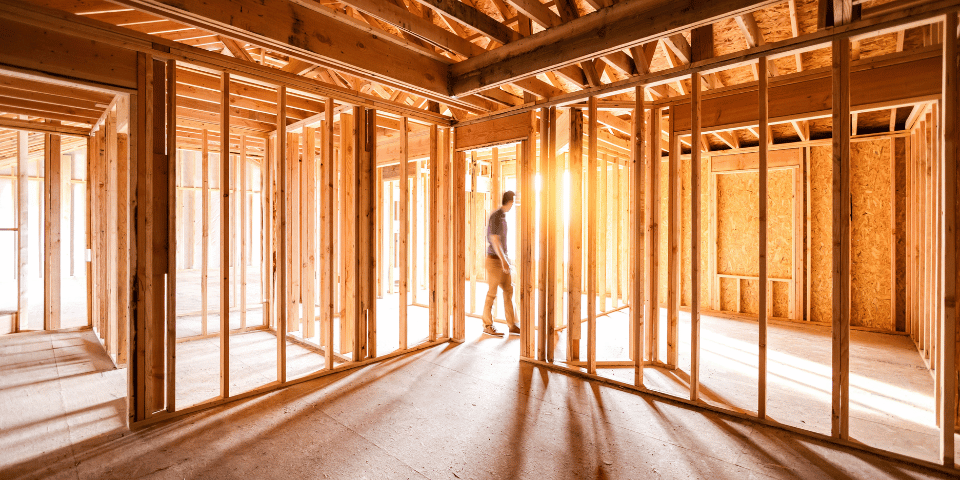The Ultimate Guide to Construction Loans for Homeowners

Building your dream home is an exciting journey, but financing the project can be complex. Unlike traditional mortgages, construction loans are specifically designed to fund new builds and major renovations. Understanding how these loans work and how to manage them effectively is crucial for homeowners who want to turn their vision into reality. This ultimate guide will walk you through everything you need to know about construction loans.
What Are Construction Loans?
Construction loans are short-term, high-interest loans that provide funding for building or renovating a property. Unlike conventional mortgages that provide a lump sum for a completed home, construction loans release funds incrementally in stages, known as “draws.” Each draw corresponds to a milestone in the construction process, such as:
- Land acquisition and site preparation
- Foundation work and framing
- Roofing, plumbing, and electrical installation
- Interior finishes and final inspections
This structured disbursement ensures that money is spent efficiently while allowing borrowers to pay interest only on the amount drawn. Lenders also gain assurance that the project is progressing as planned.
Types of Construction Loans
Homeowners can choose from several types of construction loans, depending on their project needs:
- Construction-to-Permanent Loan – Begins as a short-term construction loan and automatically converts into a permanent mortgage once the project is complete.
- Standalone Construction Loan – Covers only the construction phase; a separate mortgage is needed afterward.
- Renovation Loan – Suitable for homeowners undertaking major remodeling projects.
- Owner-Builder Loan – For borrowers acting as their own contractor, though these loans require stricter qualifications.
Understanding the type of loan that best fits your project ensures you have the right funding structure in place.
Benefits of Construction Loans
Construction loans offer several advantages for homeowners:
- Phased Funding – Funds are disbursed as needed, reducing unnecessary borrowing.
- Interest Efficiency – Interest is charged only on the drawn amounts, minimizing early-stage costs.
- Oversight and Accountability – Lender inspections ensure that each stage of construction is completed to standard.
- Customization – Allows homeowners to design a property tailored to their unique preferences.
Steps to Secure a Construction Loan
1. Evaluate Your Financial Profile
Lenders review your credit score, income stability, and debt-to-income ratio. A strong financial profile increases your chances of approval and may secure better interest rates.
2. Prepare a Detailed Project Plan
Provide architectural blueprints, cost estimates, project timelines, and contractor agreements. Detailed documentation demonstrates to lenders that the project is organized and feasible.
3. Choose a Licensed and Experienced Contractor
Most lenders require a qualified builder to approve the loan. A reputable contractor ensures that milestones are met on schedule and within budget.
4. Budget for Down Payment and Contingencies
Construction loans often require a 20–25% down payment. Additionally, set aside 10–15% of the project cost as a contingency fund for unexpected expenses.
5. Understand the Draw Schedule
Coordinate with your contractor and lender to ensure draws align with completed milestones. Timely inspections and reporting are crucial to avoid delays in fund disbursement.
Managing Your Construction Loan
Effective management of a construction loan is essential to avoid financial pitfalls:
- Keep detailed records of all expenses
- Monitor your budget and adjust for changes in project scope
- Communicate regularly with your lender and contractor
- Track interest payments and minimize unnecessary draws
Common Challenges
While construction loans are valuable, they come with challenges:
- Higher interest rates compared to traditional mortgages
- Stricter qualification requirements
- Potential delays in construction affecting loan timelines
Planning ahead and maintaining clear communication with all parties helps mitigate these challenges.
Conclusion
Construction loans are powerful tools that allow homeowners to build or renovate properties with financial confidence. By understanding the types of loans available, preparing detailed plans, selecting a qualified contractor, and managing funds effectively, homeowners can ensure that their construction projects are completed on time, within budget, and to their exact specifications.





